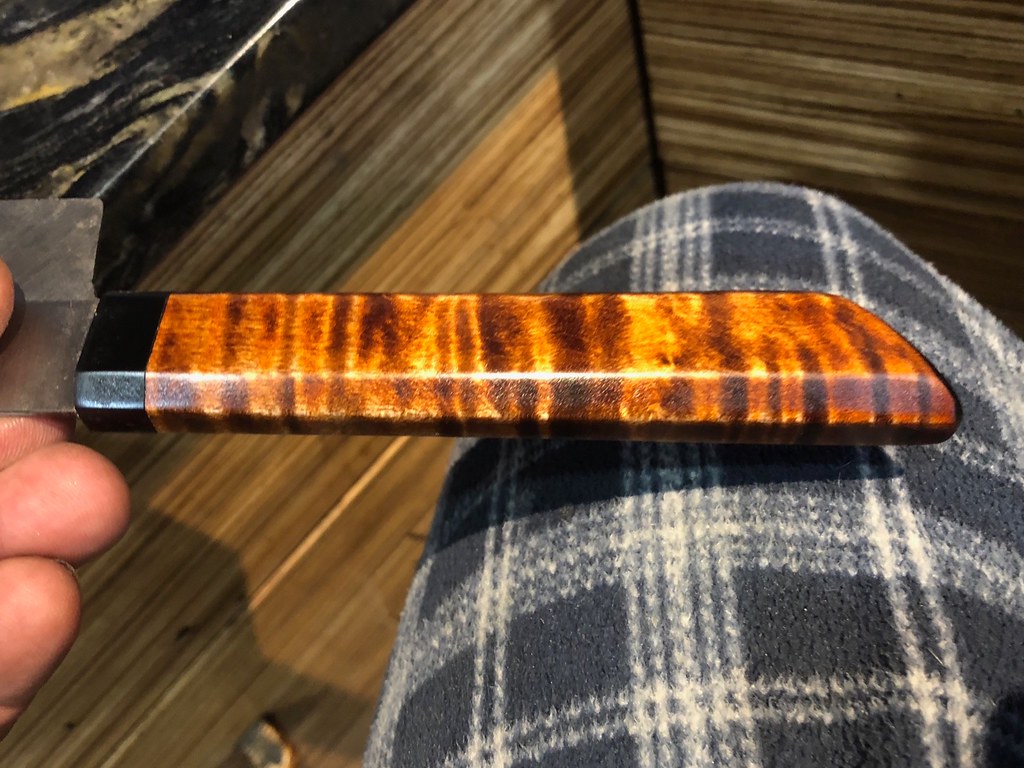If you dye the curly maple with dark amber, brown, or diluted black first, steel wool it, then apply an amber dye, it looks a lot like aqua fortis. This is common with luthiers to bring out the figure in mid grade wood.
This was done with this technique, I got 2a curly maple from Windsor plywood. Finished with Tried and True varnish oil. (Quite similar to Tru-Oil.)
 4953C1A4-CF3B-44FF-B1EB-A2D1CF1C7D67
4953C1A4-CF3B-44FF-B1EB-A2D1CF1C7D67 by
Wjkrywko, on Flickr
 3C89F831-4BB3-4C6F-A9A9-45DCEA063B73
3C89F831-4BB3-4C6F-A9A9-45DCEA063B73 by
Wjkrywko, on Flickr
 2A68FB33-4504-4CFD-81D9-0D3702FF6A8C
2A68FB33-4504-4CFD-81D9-0D3702FF6A8C by
Wjkrywko, on Flickr
Happy camper:
 1F4B0D6A-219D-4DFC-ACA3-F377E0DBA448
1F4B0D6A-219D-4DFC-ACA3-F377E0DBA448 by
Wjkrywko, on Flickr
The wood had curly figure in it to start with, but it was brought out with a few tricks.
The paring knife was done the same way. It came out a hair darker, but when side by side with the first knife made last year, it’s pretty close. The lighting in my shop is really bright, so the camera on auto adjust darkens the pics. It’s much closer in person.
 488F3CE5-902A-46B9-A736-EF1BB498261F
488F3CE5-902A-46B9-A736-EF1BB498261F by
Wjkrywko, on Flickr

 4953C1A4-CF3B-44FF-B1EB-A2D1CF1C7D67
4953C1A4-CF3B-44FF-B1EB-A2D1CF1C7D67 3C89F831-4BB3-4C6F-A9A9-45DCEA063B73
3C89F831-4BB3-4C6F-A9A9-45DCEA063B73 2A68FB33-4504-4CFD-81D9-0D3702FF6A8C
2A68FB33-4504-4CFD-81D9-0D3702FF6A8C 1F4B0D6A-219D-4DFC-ACA3-F377E0DBA448
1F4B0D6A-219D-4DFC-ACA3-F377E0DBA448 488F3CE5-902A-46B9-A736-EF1BB498261F
488F3CE5-902A-46B9-A736-EF1BB498261F